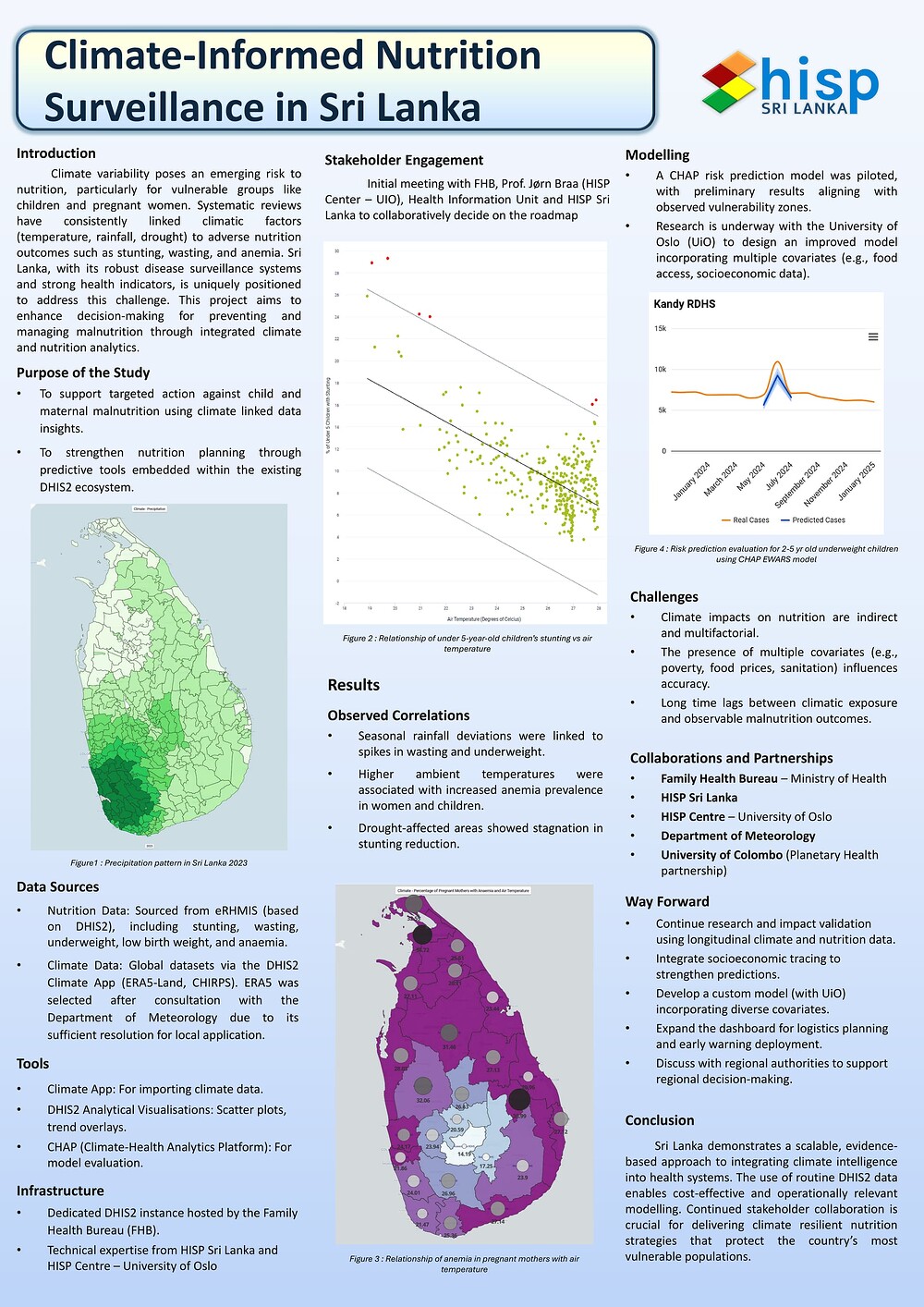AI Generated Summary
This project in Sri Lanka aims to integrate climate data with nutrition surveillance to improve decision-making for preventing and managing malnutrition. The project uses the existing DHIS2 ecosystem and data from eRHMIS for nutrition and global datasets (ERA5-Land, CHIRPS) via the DHIS2 Climate App for climate information.
Key aspects of the project include:
- Purpose: To support targeted action against child and maternal malnutrition using climate-linked data and strengthen nutrition planning with predictive tools within DHIS2.
- Modeling: A CHAP risk prediction model has been piloted, and research is ongoing with the University of Oslo (UiO) to design an improved model incorporating multiple covariates.
- Observed Correlations: Seasonal rainfall deviations were linked to increased wasting and underweight, higher ambient temperatures correlated with increased anemia, and drought-affected areas showed stagnation in stunting reduction.
- Challenges: Climate impacts on nutrition are indirect and multifactorial, multiple covariates influence accuracy, and there are long time lags between climatic exposure and observable malnutrition outcomes.
- Collaborations: The project involves the Family Health Bureau, HISP Sri Lanka, HISP Centre - University of Oslo, Department of Meteorology, and the University of Colombo.
- Way Forward: The project plans to continue research and validation, integrate socioeconomic tracing, develop a custom model, expand the dashboard for logistics and early warning, and engage with regional authorities.
The initiative demonstrates a scalable approach to integrating climate intelligence into health systems, using routine DHIS2 data for cost-effective and operationally relevant modeling, with continued stakeholder collaboration deemed crucial for climate-resilient nutrition strategies.
